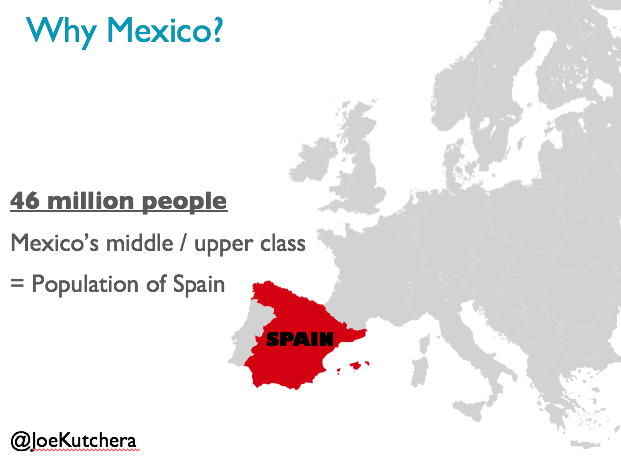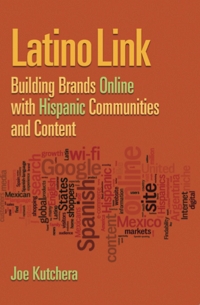The political debate over immigration and “the wall” continue. Yet, underneath the partisan bickering, stereotypes and fear, I find it important to reflect on how this may (or may not) impact our perception of doing business with our neighbor, Mexico. As a marketing/business consultant, some of my clients ask me: is now a good time to expand into Mexico? I’d like to outline some of the PRO’s and compare that with the CON’s in order to distinguish between the perceptions and the realities of Mexico.
First the PRO’s:
NAFTA Becomes USMCA
President Trump recently revised NAFTA (North American Free Trade Agreement) into the more-difficult-to pronounce USMCA (United States-Mexico-Canada Agreement), the new free trade agreement between the governments of Canada, Mexico, and the United States.
Ever since NAFTA was first signed in 1988, it has set the stage for Mexicans and Americans to become comfortable doing business together over the course of the last 30 years. During that time, many Mexican executives have gone to university or graduate school in the United States and participated in corporate training programs here. And the proliferation of American media in Mexico provides a lot of cultural understanding of how to communicate and deal with Americans.
Today, USMCA in combination with the tariffs imposed on Chinese goods make it more favorable to do business with Mexico. Plus, Mexico is far easier to travel to, being just south of the U.S. Most of Mexico is in the Central or Mountain time zones and far easier to schedule conference calls with. In other words, there is no need to schedule calls before or after work like when calling Chinese companies where the time difference is 12 hours between New York City and Beijing. And with the U.S. Dollar being as strong as it is currently, that means that now it makes even more sense to invest abroad and expand your business while U.S. dollars go further.
Perception vs. Reality of Mexico
Americans may perceive Mexico as “poor” because of the immigrants coming here. Many Latin American immigrants who come to the U.S. are indeed very poor, working as farm laborers, for example. Yet surprisingly, Mexico’s economy ranks as the 15th largest in the world, above countries like the Netherlands, Saudi Arabia and Switzerland. Approximately 47% of Mexico’s households are in its middle and upper classes (out of a total population of 132 million), which equates to a number larger than the total population of Spain (46 million). Although, it is important to remember that the gap between rich and poor in Mexico is much greater than in countries like the U.S. or Western Europe.
Another “pro” for doing business in Mexico is the average age. Mexico’s census shows that the average age is 27 years old (INEGI Encuesta Intercensal 2015), making Mexico a very young country. (In contrast, the U.S. Census reported that the national median age was 38 years in 2017). Plus, in recent years, Mexico’s GDP growth has hovered around 2% while inflation remains below 5%, which is especially low when compared to the double digital inflation that Mexico experienced in the 1970’s.
American Multinationals Doing Business in Mexico
In addition, many American multinationals see a significant percentage of their revenues coming from south of the border. For example:
- AT&T has 15 million subscribers in Mexico, after acquiring two mobile carriers there*
- Citibank owns Banamex, the largest bank in Mexico with 1,479 retail branches*
- Walmart has 20% of its stores in Mexico, its second largest market*
- Mexico is the second largest market (outside of the U.S.) for both PepsiCo and Coca-Cola*
*From the companies’ respective 2017 annual reports.
Watch me present at VCU’s School of Business in this video on “Using Digital Platforms to Expand Your Business Into Mexico, Latin America, and the U.S. Hispanic Market” here:
THE CON’s: Violence and Populism
Many clients ask me: What about the violence in Mexico? We can address this question in two parts: crime that stems from Mexico’s poverty versus violence that stems from the drug cartels.
First, approximately half of Mexico’s population lives in poverty (like many countries in Latin America). As a result, visitors to Mexico need to take precautions against crime that stems from such poverty. So, for example, travel advisors suggest not wearing flashy jewelry or showing one’s wealth. And if you take the subway or walk around busy neighborhoods, be weary of pickpockets. (Or, perhaps it’s better not to take the subway at all.) And when you need to use an ATM, do so in a safe, well-lit place, like inside a shopping mall, for example. Also, do not hail taxis on the street as you would in New York City. Instead, hire a taxi at a taxi stand or better yet, use Uber or Lyft, or even hire a driver for the day.
Over the years, Mexico has unfortunately developed a reputation for its “express kidnappings” (“Secuestros exprés” in Spanish) where renegade taxi drivers hold up tourists or wealthy Mexicans and take them to an ATM machine, forcing them to take out cash at gunpoint. But since the early 2000s, kidnappers have shifted their efforts toward the middle and lower classes (and away from tourists). Nevertheless, if you take the precautions mentioned in the previous paragraph, I firmly believe that you can go about your business without any problems.
Secondly, Mexico’s drug cartels have created a significant amount of violence, which is focused mostly in five Mexican states where their trafficking and/or drug-crop cultivation activities take place. This includes Tamaulipas (just south of Texas on the Gulf of Mexico) as well as Sinaloa, Colima, Michoacán and Guerrero (all of which are along the Pacific coast).
In addition, there are also certain border cities such as Ciudad Juarez (just south of El Paso, Texas) that have major problems because of being along the trafficking route into the USA. If you read the U.S. Department of State’s Mexico Travel Advisory for Ciudad Juarez or those five Mexican states, you will understandably get scared.
Mexican drug cartels generate somewhere between $19 billion and $29 billion annually from drug sales to Americans in the United States, according to ICE (U.S. Immigration and Customs Enforcement). Evidently, Americans buy a lot of drugs. Sadly, this equates to around 150,000 homicides in Mexico from organized crime and the drug cartels since 2006.
A recent article on the World Economic Forum blog reports that, “2017 was Mexico’s most violent year on record with over 25,000 homicides—a 50% jump since 2015.” It shows that economic activity for the country’s micro enterprises are most vulnerable. These represent more than 95% of Mexico’s businesses that employ only up to ten people, such as family-owned corner bakeries. It states that, “these findings emphasize the severe human and economic costs associated with crime. The sheer magnitude of the economic costs add to the many other reasons why fighting crime needs to be a policy priority in Mexico.”
In interpreting these statistics, it is disappointing to see how this impacts Mexico’s family-owned, micro enterprises. Nevertheless, it is important to remember that the violence happens mostly in the five states mentioned above and not in the main tourist areas like Cancún or business centers such as Mexico City or Guadalajara. If you ask, most Mexicans in the major cities and tourist destinations (Mexico City, Guadalajara or Cancún) will tell you that they have rarely, if ever, had a problem. Still, it is important to take the proper precautions. However serious the violence is, I believe that the media in the U.S. makes viewers think that the problem exists all over Mexico, which isn’t the case. It tends to be focused in the areas where the drug cartels are most active. One analogy I like to make: Just imagine how people outside of the U.S. look at the shootings in our schools, movie theaters and concerts. Yes, these tragic shootings happen too often, yet they aren’t widespread.
Another input to consider about doing business in Mexico is its new populist president, Andrés Manuel López Obrador, often referred to by his initials “AMLO.” He has cancelled the construction of Mexico City’s new airport (started by his predecessor) due to claims that the billion-dollar project was too corrupt. And he promises to root out corruption in the government and military, including the government-owned national oil company, PEMEX. Some say that he has come down too hard on businesses and instead has favored his political amigos. This article in the Houston Chronicle addresses that very subject – AMLO’s corruption focus adds to anxieties of energy firms, investors – indicating that the business environment has become more murky.
Jorge G. Castañeda, a Professor at NYU and Mexico’s former Secretary of Foreign Affairs (2000–2003), wondered what other options AMLO will propose to alleviate the congestion and growing demand at Mexico City’s current airport, in this interesting article in the New York Times – “AMLO’s First 100 Days: The Ugly, the Absurd and the Good.”
Overall, Castañeda gives a negative prognosis saying, “Most economists are now forecasting a sharp decline in government revenues and spending this year, as well as a decline in foreign and private domestic investment.” At the same time, Castañeda applauds AMLO’s decision to raise Mexico’s miserly minimum wage nationwide, and to double it along the border. AMLO’s stance on business policy is uncertain. Yet it seems that Mexico’s poor may have more faith in the country’s democracy after electing AMLO, following a number of presidents that favored the upper classes. (Unlike in the U.S., Mexican presidents are in power for only one, six-year term.)
Jumping off Point for Latin America
Even with the challenges that I have outlined above, I feel that for American businesses doing business in the major cities, the pros outweigh the cons in the long term. Mexico still presents many business opportunities as well as a launch pad for expanding into Latin America. Mexico is Latin America’s second largest market, behind Brazil. Spanish is one of the top three languages in the world, behind English and Mandarin. Over half a billion people speak Spanish natively including the 20 Spanish-speaking countries across Latin America and Spain. There are 254MM Internet users across Latin America, which includes Brazil, where they speak Portuguese.
Two Case Studies: Flipboard and Amtrak
In my video presentation, I outlined two case studies or examples of how to virtually expand into Mexico and Latin America, the first an advertising-supported business and the second a travel e-commerce company.
When I worked at Flipboard, the news curation app/website based, we launched the Spanish-language version with a variety of new partnerships: media brands, journalists, and influencers. We worked with these partners to develop and offer more localized content to readers in each country in Latin American, which helped us to dramatically grow traffic and engagement of Flipboard users. In addition, we even dipped our toe into the water by selling advertising deals in the region to IBM and Argentina Tourism. Read the case study for details.
In the second case study, Amtrak launched its Spanish-language website and app, originally catering to the U.S. Hispanic market. While the government-owned train company did increase sales among U.S. Hispanics, Amtrak also saw sales growth from Spanish and Latin American tourists traveling to the U.S. These tourists wanted train tickets and of course felt more comfortable buying them in their native language. This led Amtrak to translate its e-commerce platforms into German, French and even Mandarin, again for international tourists who wanted to see the U.S. while vacationing by train. See the case study for details for how Amtrak grew its e-commerce sales among international tourists.
U.S. Hispanic Market = Entryway for Mexican Market
The Internet and social media have drastically changed how recent waves of immigrants to the U.S. such as Latinos “acculturate,” or adapt to a new culture. Today, Skype, WhatsApp, email, and Facebook enable immigrants to keep in touch with their relatives back home to a far greater extent than previous generations of immigrants ever have before. There are 51 million U.S. Hispanics, 65% of which are Mexican-American, or approximately 33 million. They constitute $1.2 Trillion in spending power. But what’s interesting is how this market can serve as a launch pad into Mexico. One example of that is for financial services companies. In 2017, U.S. Latinos sent $28 billion USD back to relatives in Mexico. These remittances were the #1 source of revenue for Mexico’s GDP. Mexican retailers, like Elektra, can find new revenue opportunities by offering deals to Mexicans picking remittances in their stores.
If you have any comments or questions, please contact me by email. You can also read my other case studies HERE.







